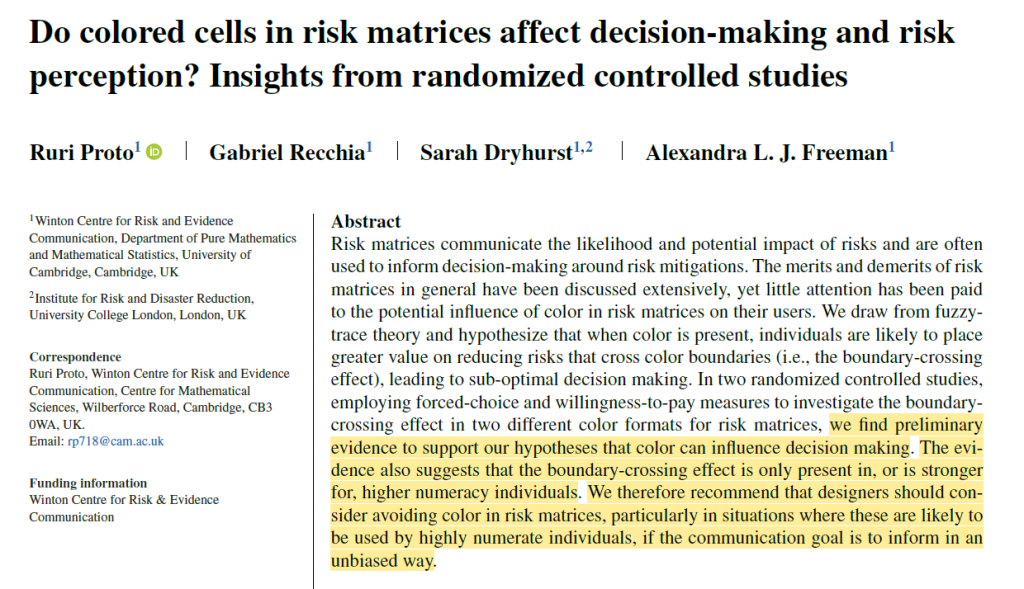
This might interest those who design risk matrices. I’m on a matrix binge at the moment.
They explored how the colour design in matrices can influence decision-making.
NB. I have a few more coming up in the near future on design suggestions/improvements for those interested.
Colours are said to be important for various reasons, one is that “cell colors convey a qualitative, ordinal description of risk severity, they are likely to facilitate decision-making that relies on ordinal gist representations, rather than verbatim representations”.

Some findings:
· They found “evidence to support our hypotheses that color can influence decision making”
· The “boundary-crossing effect is only present in, or is stronger for, higher numeracy individuals. We therefore recommend that designers should consider avoiding color in risk matrices, particularly in situations where these are likely to be used by highly numerate individuals, if the communication goal is to inform in an unbiased way” [** specific bias reduction is probably more accurate]
· In contrast, “, if the goal of communication is to persuade individuals to implement certain risk mitigation actions, it might be that assigning colors so as to elicit the boundary-crossing effect would facilitate this” [* Some may think about the ethics of this, and taking no sides here, it’s pretty common in practice and language to shape artefacts for motivated gains]
· Hence, the experiments provide preliminary evidence that “the color assignment in risk matrices might influence people’s perception of risk gravity, and therefore their decision-making with regards to risk mitigation”
· They “found that individuals might be tempted to cross color boundaries when reducing risks even if this option is not advantageous (i.e.,the boundary crossing effect)”
· But notably, this effect wasn’t consistently found when exploratory analyses of risk mitigations were included at different impact levels
· As expected, the study had limitations – one is that the effects weren’t always consistently observed, the findings don’t extend to purely qualitative and quantitative matrices and some other limitations.
· Nevertheless, they suggest that a cautious recommendation from the research, noting limitations, is to consider the “potential biasing effects of color [which] should be considered alongside the goal of communication”


Ref: Proto, R., Recchia, G., Dryhurst, S., & Freeman, A. L. (2023). Do colored cells in risk matrices affect decision‐making and risk perception? Insights from randomized controlled studies. Risk analysis, 43(10), 2114-2128.
Study link: https://onlinelibrary.wiley.com/doi/pdf/10.1111/risa.14091
My site with more reviews: https://safety177496371.wordpress.com
One thought on “Do colored cells in risk matrices affect decision‐making and risk perception? Insights from randomized controlled studies”